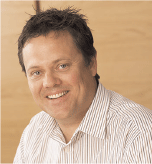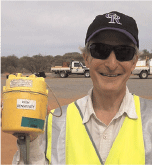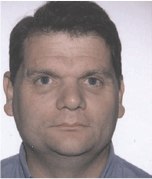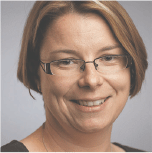Maximising safety and environmental performance during onshore seismic acquisition using cable-less technology
Jamie Shaw A , Matt Silverman B , Geoff Dunn C and Katrina O’Mara AA AECOM.
B Fleet Resources.
C Terrex Seismic.
The APPEA Journal 54(2) 496-496 https://doi.org/10.1071/AJ13069
Published: 2014
Abstract
Recent advances in the acquisition of onshore seismic data without cables have greatly reduced impacts on environmental and heritage values and increased recording efficiency. Onshore oil and gas exploration has expanded significantly across Australia. As a result, the need to gather quality data while reducing the environmental, social and safety impacts of the activities has driven innovation in exploration technologies. In WA, exploration permits are granted for areas that include privately held farm land, pastoral leases or unallocated crown land. This can result in tensions between exploration companies, their contractors and land holders. Cable-less seismic data acquisition systems provide significant opportunities to reduce the environmental, community and safety impacts. Cable-less systems typically require significantly fewer trips along the acquisition line, considerably reducing the likelihood of negative impacts on plants, animals and soils in the area. Other benefits include reducing fuel consumption, vehicle and traffic movement and the risk of injury to the seismic crew associated with the deployment of cables. This extended abstract reviews the recent use of a cable-less system for Fleet Resources’ seismic acquisition conducted by Terrex Seismic in the Carnarvon Basin, WA, demonstrating the environmental, social and safety benefits compared with traditional cabled systems for both 3D and 2D seismic programs. This extended abstract also draws on the experiences of Terrex’s use of the technology on behalf of UIL Energy and it explores the opportunities for capturing these benefits during the preparation of environmental and safety plans for regulatory approval.

Jamie Shaw has 20 years’ experience in the environmental services industry. His experience spans a range of industries, including the resources, public infrastructure and oil and gas exploration sectors. Since joining AECOM, Jamie has undertaken impact assessments throughout WA, assisting with gaining environmental approvals for projects such as the Browse LNG Hub Strategic Environmental Assessment and Searcher Seismic’s offshore EPs. He was made President of the Environmental Consultants Association (WA) in January 2014. Jamie is Fleet Resources’ Perth based environmental representative and assisted Fleet in obtaining special prospecting authority for its permit area in the Carnarvon Basin. He gained direct exposure to the HSE benefits of the cable-less system when undertaking an audit against the approved EP and OSH Plan. |

Matthew R. Silverman is Director and Exploration Manager of Fleet Resources PL, the operator of the South Carnarvon seismic program. He has over 35 years of oil and gas industry experience and leads the exploration efforts of Robert L. Bayless, Producer in the United States and in both the NT and WA. He was instrumental in developing Sweetpea Petroleum’s Proterozoic exploration project in the Beetaloo Basin. Before joining Bayless in 2002, Mr. Silverman worked for Total, Texas Gas Exploration and Gustavson Associates. He is a Certified Petroleum Geologist and past President of the Denver International Petroleum Society. Mr. Silverman received an AB from Brown University and an MS in Geological Sciences from the University of Colorado. He has lectured and published on a wide variety of geological and petroleum-history topics, and is the 2014 President of the Rocky Mountain Association of Geologists. |

Geoff Dunn is a Senior Geophysicist with Terrex Seismic, Australia’s largest onshore seismic services provider. He has over 20 years’ experience in geophysical acquisition, and processing for both the mineral and oil and gas industries. He has experience with land, marine and transition zone seismic, as well as, electromagnetic and potential field geophysical techniques. Geoff was instrumental in bringing Fairfield Nodal’s Zland seismic acquisition system to Australia after numerous trials of competing cable-less systems both here and overseas. Prior to working for Terrex, Geoff project managed the airborne geophysical survey for the Broken Hill Managed Aquifer Recharge Project on behalf of Geoscience Australia and Australia’s largest hard rock 3D seismic survey for BHPB to date. Geoff graduated from Monash University with a Bachelor of Science (Hons) in Geophysics and maintains an interest in geophysical technology advancements that reduces environmental impact. |

Katrina has a broad scientific background with a BSc in physics and chemistry, with Honours in Physics. Having left the academic world behind her, Kat has spent the last few years working on onshore activities for the oil and gas sector, including coordinating environmental approvals for onshore and offshore seismic programs. She also lead the greenhouse gas assessment for the Strategic Environmental Assessment for the Browse LNG Precinct and is AECOM’s project manager for a number of environmental support projects for oil and gas clients in WA. |


